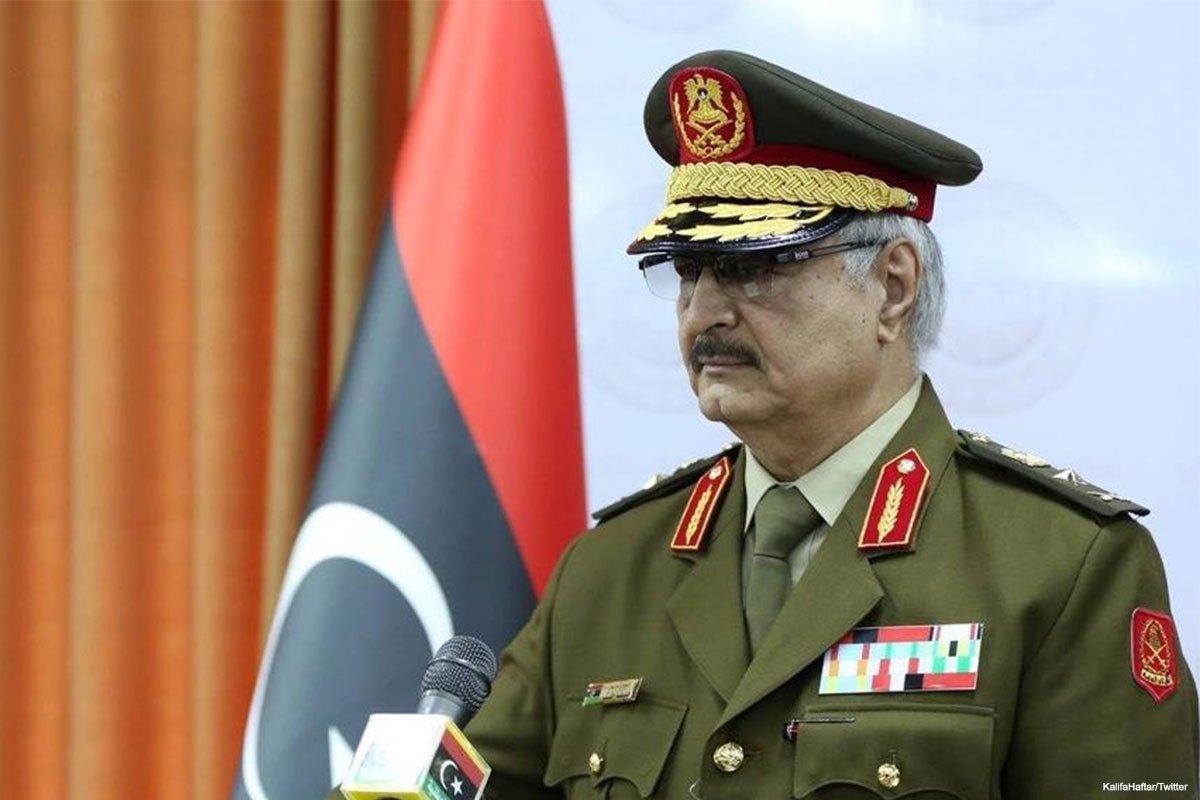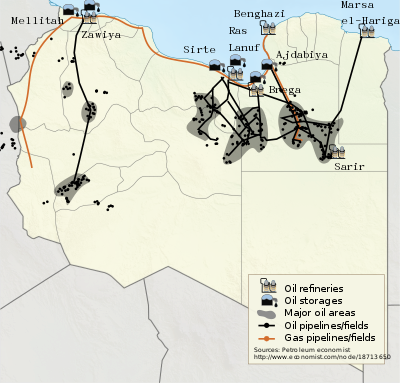Libya is coming apart again — though of course it was never put back together in the first place after NATO’s regime change war to topple Muammar Gaddafi in 2011 in the first place. Since then it’s been a jihadist wasteland of three, or at times up to four, competing governments vying for control of land and resources.
And now, as Bloomberg reports this week “Libya’s most powerful warlord has his sights on the capital” of Tripoli and “even his international backers are nervous.” Who are Khalifa Haftar’s international backers? He was for a couple decades believed to be on the CIA’s payroll while living in suburban Virginia outside Washington, D.C. in exile during Gaddafi’s rule. He’s also financed by the UAE and quickly emerged as a main player collecting the spoils in the aftermath of the US-French-NATO bombing campaign in support of the rebels.

Based in Libya’s oil-rich east, Haftar’s militia has already captured much of the country’s oil resources, especially after a successful blitz to take much of the south this year.
And now he reportedly has his eye on the capital of Tripoli in the west — home to the UN-recognized Government of National Accord (GNA) and Libya’s state-run National Oil Corporation, which when combined with small subsidiaries under its direction accounts for some 70% of the country’s oil output.
But has an increasingly powerful Haftar gone rogue, outside the bounds of his international political and financial backers? Or is he actually the external brokers’ “solution” to impose order after years of post-Gaddafi chaos? Are we witnessing the rise of Libya’s new strongman — a Gaddafi 2.0 who will be amendable to western and gulf interests?
Bloomberg reports the growing alarm of his international backers:
Alarmed, international powers are clamoring to avert a military showdown that could rattle global oil markets and sow further chaos in a divided country already struggling to defeat Islamic State and stem the flow of migrants toward Europe.
The UAE has reportedly tried to intervene with Haftar, urging him to put on the brakes and negotiate a power sharing situation, but to no avail.
Haftar’s forces, known as the Libyan National Army (LNA), have continued bulldozing their way across the country at lightning pace:
But Haftar has continued to indicate that an offensive on Tripoli is looming, according to three Western diplomats who declined to be named. Rumors his self-styled Libyan National Army is building up troops and weapons in the west are adding to the anxious mood. LNA spokesman Ahmed al-Mismari said as recently as February that elections could only take place once the whole country was secure.
“We should be in no doubt that everything Haftar has done until now has been to get to Tripoli, to be the man in Tripoli,” said Mohamed Eljarh, co-founder of Libya Outlook for Research and Consulting, a think-tank based in the east. He’s likely to continue planning for a takeover “whether peacefully or violently.”
Interestingly, Haftar has also enjoyed the political backing of an unlikely assortment of powerful countries that include Russia, France, and Egypt. This is due to his purported secular identity and political platform, and his willingness to fight the jihadists, including Libyan ISIS.
As a “secular autocrat” with external backing and potentially “West-friendly”, he precisely fits the model of a nationalist type dictator uniting the various large feuding tribes in the mold of Gaddafi (the late Libyan 42-year ruler himself at various times enjoyed the backing of European powers).

Bloomberg reports further his LNA already has immense leverage as a potential military and political showdown with Tripoli GNA officials looms:
Already in control of Libya’s main oil-exporting terminals, the LNA has secured its biggest oil field since beginning its southern campaign in January. That puts Haftar in control of more than 1 million barrels of production a day, giving him crucial leverage over the OPEC member’s key source of income as well as command of its most powerful fighting force.
Post-Gaddafi Libya has been largely forgotten about in the media after its “liberation” by NATO and Islamist militants, and since 2011 has existed in varying degrees of anarchy and chaos. Libya has remained split between rival parliaments and governments in the east and west, with militias and tribes lining up behind each, resulting in fierce periodic clashes.
The most significant of these warring militias nationwide has long been Haftar’s LNA, which has for the past couple years controlled much of eastern Libya and emerged as the chief rival to the UN-backed GNA in the western half of the country.
Haftar has since 2017 been reported to be planning a move on Libya’s vital “oil crescent region” while bolstering his forces with Chadian mercenaries, according to prior local reports. Now largely successful in this endeavor, control of the capital would constitute the endgame allowing him to solidify rule over all portions of the country.
Prior the 2011 Libyan war and NATO military intervention which ultimately led to the field execution of Muammar Gaddafi, the country produced about 1.6 million bpd, but years of turmoil and political instability in the aftermath have slashed that to 550,000 barrels per day as of 2018 output numbers.
via ZeroHedge News https://ift.tt/2TaAgAq Tyler Durden